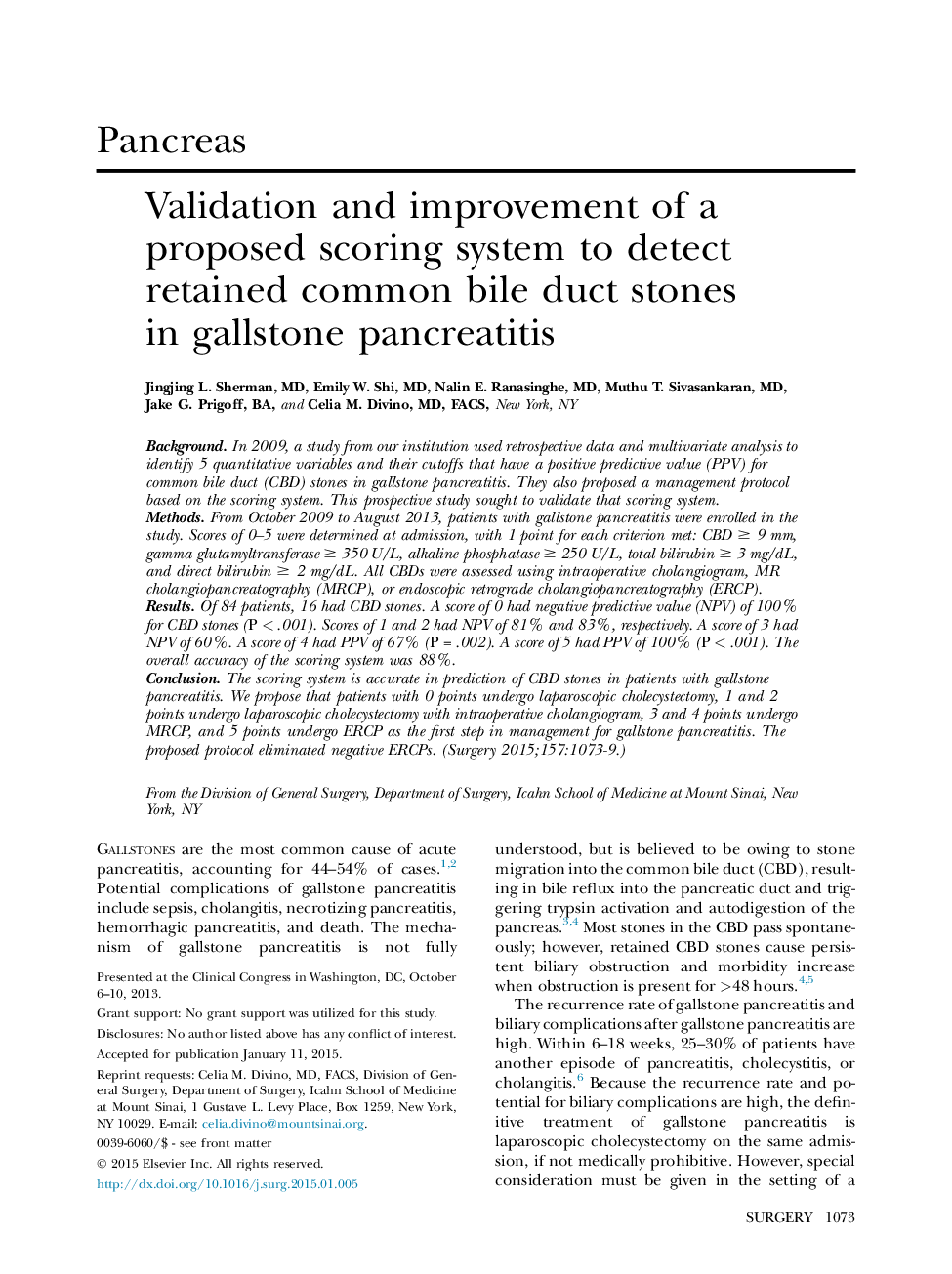| Article ID | Journal | Published Year | Pages | File Type |
|---|---|---|---|---|
| 6255148 | Surgery | 2015 | 7 Pages |
BackgroundIn 2009, a study from our institution used retrospective data and multivariate analysis to identify 5 quantitative variables and their cutoffs that have a positive predictive value (PPV) for common bile duct (CBD) stones in gallstone pancreatitis. They also proposed a management protocol based on the scoring system. This prospective study sought to validate that scoring system.MethodsFrom October 2009 to August 2013, patients with gallstone pancreatitis were enrolled in the study. Scores of 0-5 were determined at admission, with 1 point for each criterion met: CBD ⥠9 mm, gamma glutamyltransferase ⥠350 U/L, alkaline phosphatase ⥠250 U/L, total bilirubin ⥠3 mg/dL, and direct bilirubin ⥠2 mg/dL. All CBDs were assessed using intraoperative cholangiogram, MR cholangiopancreatography (MRCP), or endoscopic retrograde cholangiopancreatography (ERCP).ResultsOf 84 patients, 16 had CBD stones. A score of 0 had negative predictive value (NPV) of 100% for CBD stones (P < .001). Scores of 1 and 2 had NPV of 81% and 83%, respectively. A score of 3 had NPV of 60%. A score of 4 had PPV of 67% (P = .002). A score of 5 had PPV of 100% (P < .001). The overall accuracy of the scoring system was 88%.ConclusionThe scoring system is accurate in prediction of CBD stones in patients with gallstone pancreatitis. We propose that patients with 0 points undergo laparoscopic cholecystectomy, 1 and 2 points undergo laparoscopic cholecystectomy with intraoperative cholangiogram, 3 and 4 points undergo MRCP, and 5 points undergo ERCP as the first step in management for gallstone pancreatitis. The proposed protocol eliminated negative ERCPs.
